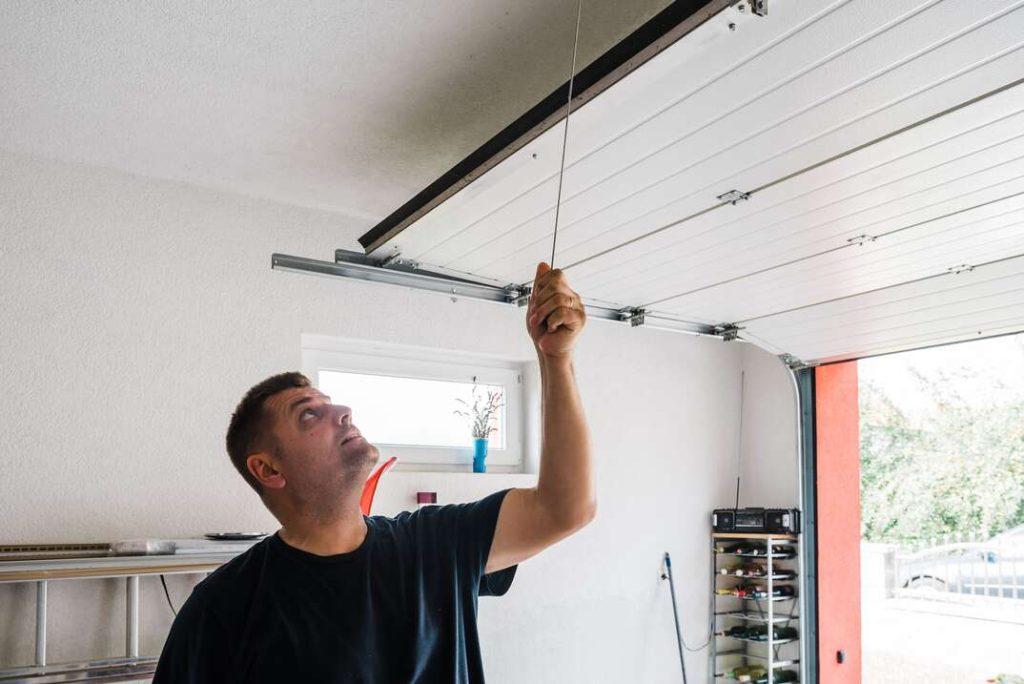How To Open Your Garage Door Manually From Inside? Your garage door is a modern convenience, but what happens when the power goes out? In this comprehensive guide, we’ll explore the essential skill of opening your garage door manually from inside. Learn the step-by-step process and gain the confidence to navigate unforeseen circumstances seamlessly.

Understanding the Necessity: How To Open Garage Door Manually From Inside
The Importance of Manual Operation
Imagine a power outage or a malfunctioning garage door opener. In such situations, knowing how to open your garage door manually from inside becomes crucial. This skill empowers you to access your garage, retrieve your vehicle, or secure your belongings even when faced with technical challenges.
Exploring the Process: How To Open Garage Door Manually From Inside
1. Locate the Emergency Release Cord
The key to manually opening your garage door lies in the emergency release cord. This cord is usually red and hangs from the garage door opener carriage. Find it and pull it down to disengage the garage door opener from the door itself.
2. Move the Door Manually
Once the emergency release cord is pulled, you can manually move the garage door. Be prepared for some resistance, especially if the door is heavy. Use both hands to lift the door, and if it’s a sectional door, lift each section individually until the door is fully open.
3. Secure the Door in the Open Position
After manually opening the garage door, it’s crucial to secure it in the open position. You can use a rope or a cord to tie the door to the track to prevent it from unexpectedly closing. This step is essential for safety and convenience.
Read too: Troubleshooting When Your Manual Garage Door Won’t Open All the Way: Unlocking Solutions
Common Concerns: Troubleshooting the Manual Operation
1. Difficulty in Lifting the Door
If you find it challenging to lift the garage door manually, it could be due to issues such as a broken spring or a misaligned door. In such cases, it’s advisable to seek professional assistance to address the underlying problem.
2. The Door Won’t Stay Open
If the garage door won’t stay open after manual operation, check the track and the door’s balance. Adjustments may be needed to ensure the door remains in the open position securely.
3. Reconnecting the Garage Door Opener
Once power is restored or the garage door opener issue is resolved, it’s essential to reconnect the opener to the door. Simply pull the emergency release cord towards the door to re-engage the carriage with the opener.
Proactive Measures: Ensuring Readiness for Manual Operation
1. Regularly Test the Emergency Release Cord
Periodically test the emergency release cord to ensure it’s functioning correctly. This simple step ensures that you are prepared for any situation requiring manual garage door operation.
2. Lubricate Moving Parts*
Keep the moving parts of your garage door well-lubricated. This preventive measure reduces friction and makes manual operation smoother in case of emergencies.
3. Seek Professional Maintenance*
Schedule regular professional maintenance for your garage door. This ensures that all components are in optimal condition, reducing the likelihood of issues requiring manual operation.
Conclusion: Mastering the Skill for Unforeseen Situations
In conclusion, knowing how to open your garage door manually from inside is a valuable skill that can prove essential during power outages or garage door opener malfunctions. By following the simple steps outlined in this guide and addressing common concerns proactively, you can confidently navigate unforeseen circumstances and ensure access to your garage whenever needed.



Leave a Reply